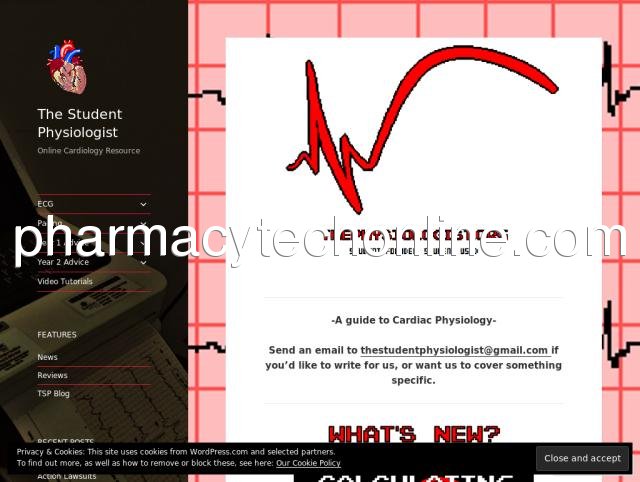thephysiologist.org Review:
pharmacytechonline.com/t/thephysiologist.org.html
The Student Physiologist – Online Cardiology Resource - -A guide to Cardiac Physiology- Send an email to [email protected] if you'd like to write for us, or want us to cover something specific. -TSP Mobile: ECG is now available on Google Play! The iOS version is incoming, but it takes a little longer to be added to the App Store. I'll update these sentences as soon as it's live.…

Country: 192.0.78.25, North America, US
City: -122.4156 California, United States
I like it, but the battery died after I only used it for two times. :( Their service is nice, they tried to send me a new light, but I got a filling instead. They said they gonna send me another one, but I haven't got the one yet. So I will just go try other brands which last longer.
This is a pretty solid bike for the price. At 6' 00" with 32.5" inseam, this bike is the right size. However, if you are shorter than 5' 11", you may want to consider the medium size (even though Diamondback size chart says 5' 10" is ok) as this bike runs a bit large. It DOES NOT include the assembly tools (confirmed!!). Assembly was pretty easy, but you can't go by the absolutely useless instruction book (look to their website for guidance instead). Most of the bike was already assembled. After 1 hour basic assembly, I had brake noise on rear brake/rotor and noise from chain rubbing against the front derailleur. Knowing absolutely nothing about bikes, it took several youtube videos and another 3 hour to fine tune it. This included adjusting rear brake pad position, rear brake cable tension, and bending the rear rotor just a bit. On the front derailleur, I adjusted tension as well as the high and low limit on front derailleur. They seemed pretty difficult at first, but once you get through it, it will be much easier if you need to do it again. I then made sure that everything was tight and secure, in case someone at the factory was incompetent. Now it shifts very quickly, smoothly and quietly. The brakes stop effectively with no noise at all.
This is J. Cole's best & most consistent album yet! His older stuff tended to be on the boring side after a few listens but he really stepped it up on 2014 Forest Hills Drive! This album had no promotion & it was released out of nowhere. I think that he finally found his niche & I hope that he stays in this lane. The beats are hard & the lyrics compliment them so well. Props to Cole!